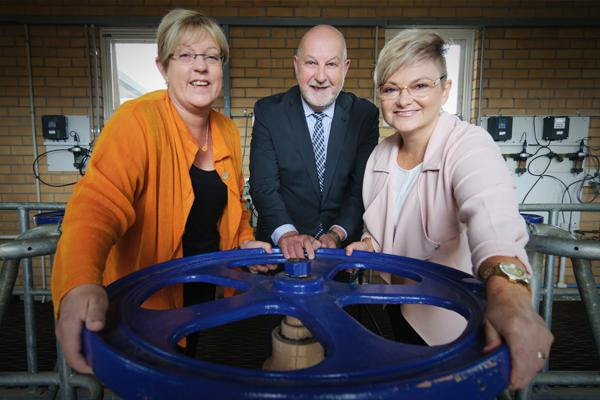Geelong’s water demand could exceed supply by 2029, Barwon Water modelling has revealed.
Barwon Water managing director Tracey Slatter this week warned climate change meant Geelong could not rely on rainfall alone to secure supply.
“With an expected hotter and drier future climate, we all have a role in conserving water now and planning for the future,” she said.
“While it has felt wetter in parts of our region this year, we have actually had below average rainfall at West Barwon Reservoir in eight of 11 months.
“While water supplies are secure for now, Barwon Water’s modelling shows that by 2029, demand could exceed supply.
“The long-term trend has seen a 32 per cent drop [on] average in inflows at West Barwon Reservoir since 1997 when compared to the long-term average prior to that year.”
But investments made after the Millennium Drought, including Barwon Water’s Anglesea borefield and the Geelong-Melbourne pipeline, would help stave off that scenario, Ms Slatter said.
“During the Millennium Drought, and even more recently during the 2015-2016 El Niño and the hot dry start to 2019, we learned that water storages can draw down rapidly in dry periods.”
The projects had helped get local water storage levels to above 80 per cent in time for this summer, she said.
Water storages had since dropped slightly to 78.8 per cent yesterday.
“Without access to the Melbourne to Geelong pipeline and Anglesea borefield, storage levels for Geelong would be about 17 per cent lower,” Ms Slatter said.
Increasing recycled water use on the Bellarine Peninsula and water-efficiency programs with residential customers, businesses and schools had also helped, she said.
The warning comes as Barwon Water this week released its annual water outlook, detailing the security of the region’s supply over the next two years.
The outlook contains information about the region’s water supply systems, local population figures, forecast graphs of storages and how supply options are being used.
Ms Slatter urged everyone to consider how they used water and to follow Victoria’s permanent water-saving rules to ensure access to the precious resource in the long team.








